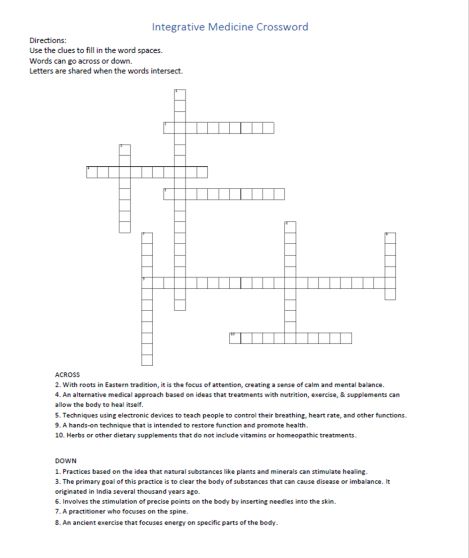What comes to your mind when you hear the term “Integrative Medicine”? Do you think of herbs and supplements? Or maybe hypnosis? Would it surprise you to know that integrative medicine can include both of those things, but can also include treatments like chiropractic manipulation and even Harmonicas for Health?
On a recent call with the Community Engagement Committee (CEnCO), we asked what topics they would like to learn more about, and the topic of integrative medicine was brought up. I thought I could offer a little bit of information about what it is and some common types of treatments that are available. This post is not suggesting that you modify your current treatment, nor is it endorsing any of these treatments. Before beginning any treatment, consult with your physician.
So, what is integrative medicine? It is easier to think of integrative medicine as treatment that goes along with your traditional treatment plan. The term used in the medical world is complementary treatment. There are many different kinds of treatments that fall into this complementary category, but the one thing they all have in common is that they all intend to promote healing, balance, and an improved sense of well-being.
Listed below are a few different types of treatments. As you read through the list, think of how these treatments could be helpful for those living with a chronic illness.
- Biofeedback – This is a technique that teaches people how to actively control their body function. By using electronic sensors and monitoring, a person can regulate things like heart rate, blood pressure, and breathing to reduce stress, relieve pain, and more.
- Chiropractic manipulation – Some alternative medicine practitioners believe when the spine is aligned properly, the body can begin to heal. The practice of chiropractic manipulation is when a chiropractor uses techniques to put the vertebrae (bones of the spine) back in place.
- Homeopathic therapy – This is a practice of medicine based on the idea that there are substances that can produce symptoms or sickness in a healthy person; but those same substances, in small amounts, can relieve or cure symptoms in a sick person. An example of this might be red onions. Red onions can cause your eyes to tear up and water when you cut them, but some people use red onions to treat allergy symptoms. There is a lot of debate about the effectiveness of homeopathic medicine, but it has been around since the 1700s.
- Meditation – With its beginnings in Eastern traditions, this is the practice of focusing attention and removing all outside thoughts from the mind. This practice can lead to relaxation and calmness. It is also promoted as a way to help people change the way they allow thoughts and emotions to affect them.
- Tai chi – This is both a physical and mental exercise. As an individual goes through the movements with their body in slow, beautiful motions, they also practice deep breathing and meditation. Tai chi is often called “moving meditation”. This combination of physical and mental exercise is thought to help energy flow through the body.
There are many more types of complementary therapies — too many to list here. But here is a link to a website with more treatments listed.
And as a fun way to learn more, here is a crossword puzzle for you. Use the link above to help you find the answers if you are stumped! And I will put the answers in the comments below.
What do you think about integrative medicine? Have you tried it? What did you think? Did you find it beneficial?
I’d love to hear from you!